Bronze daggers
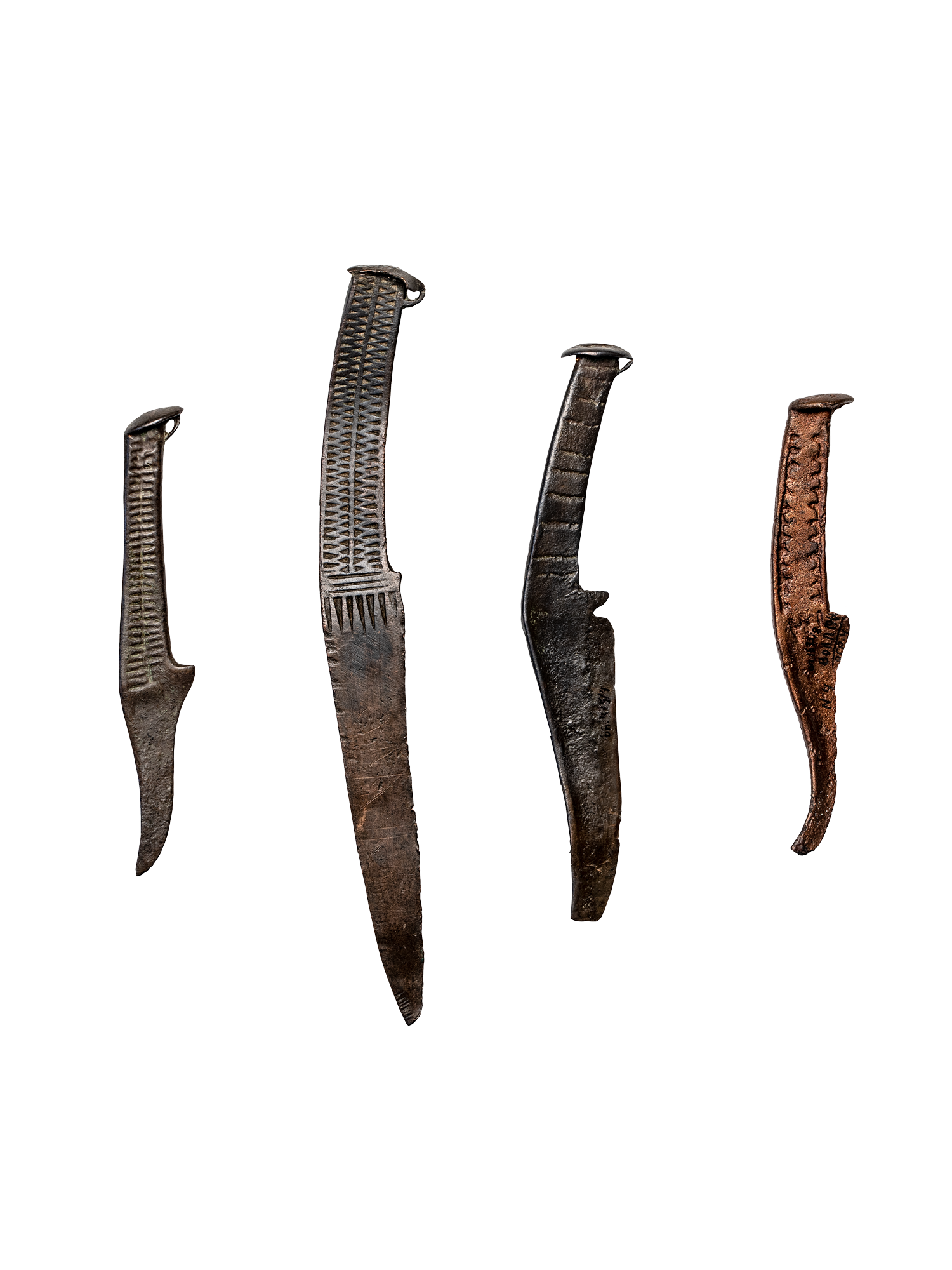
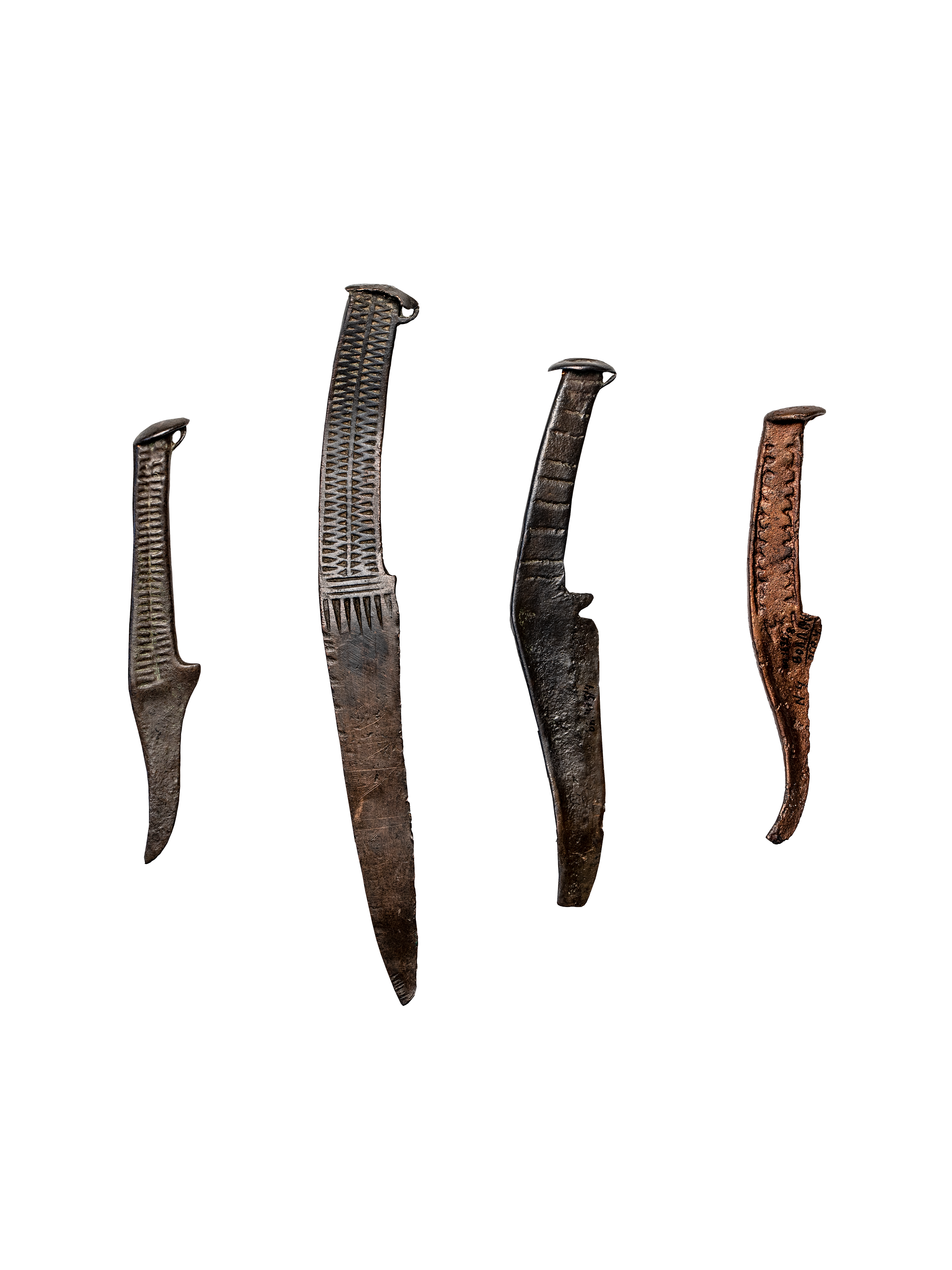

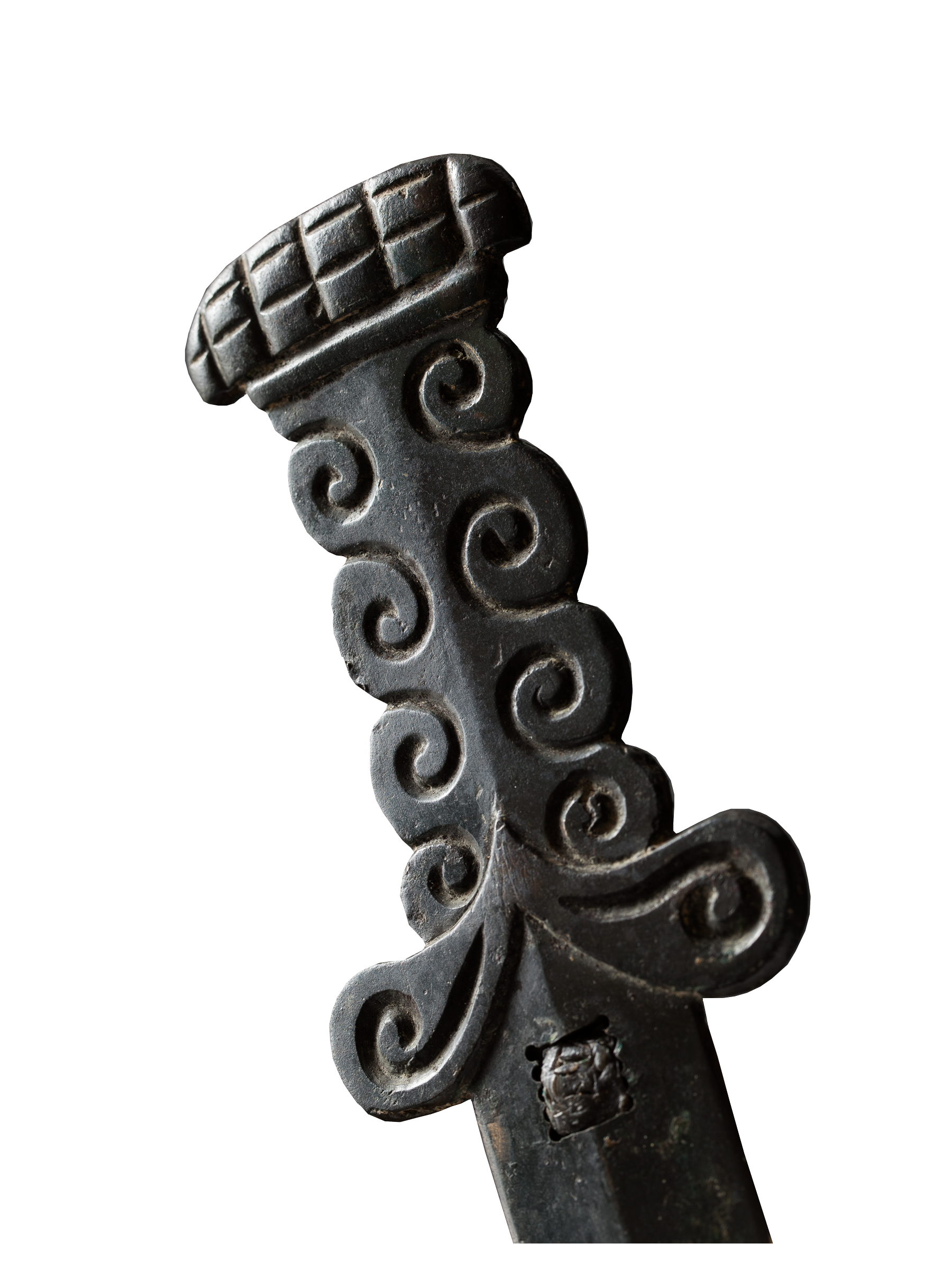
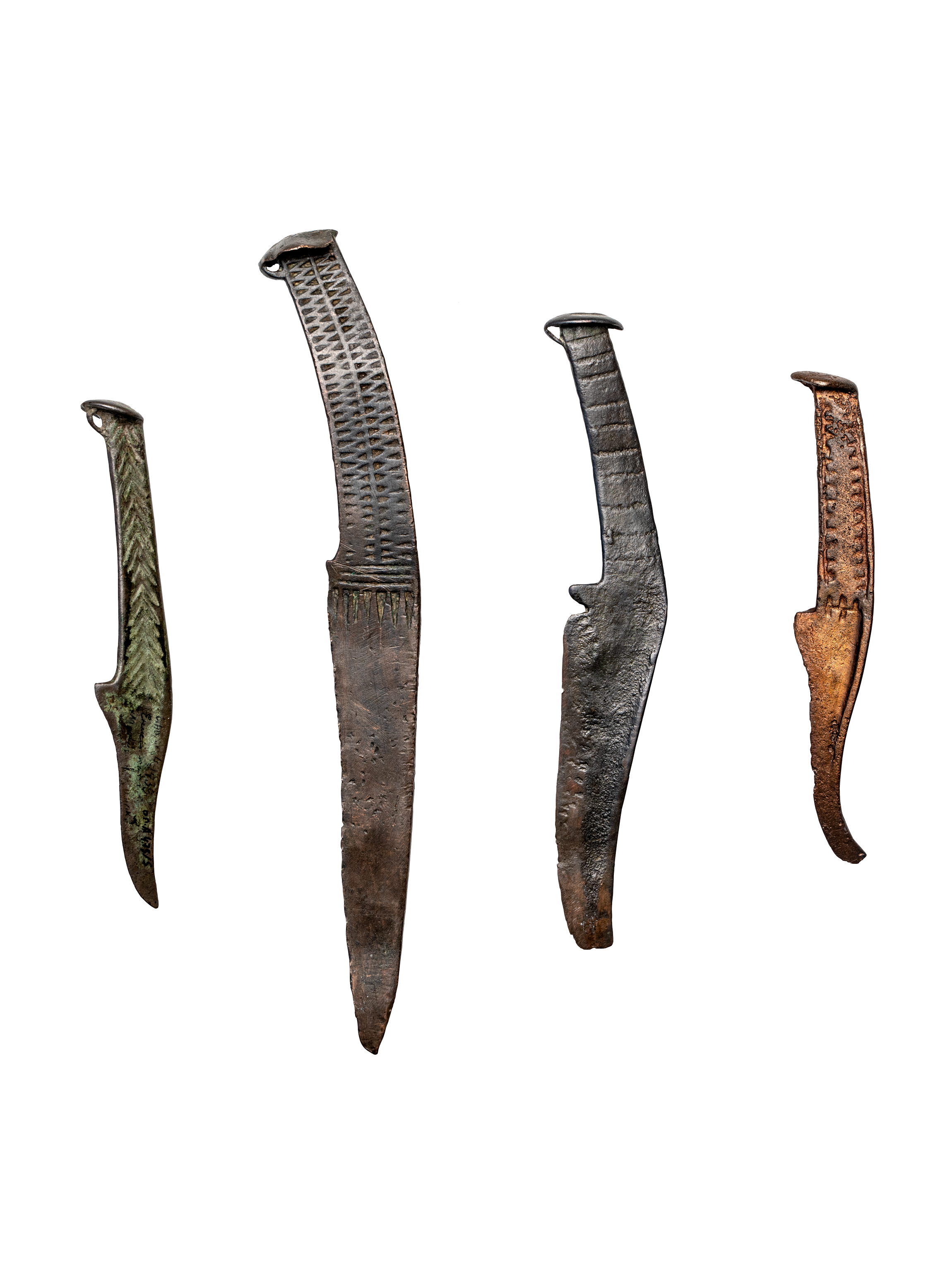
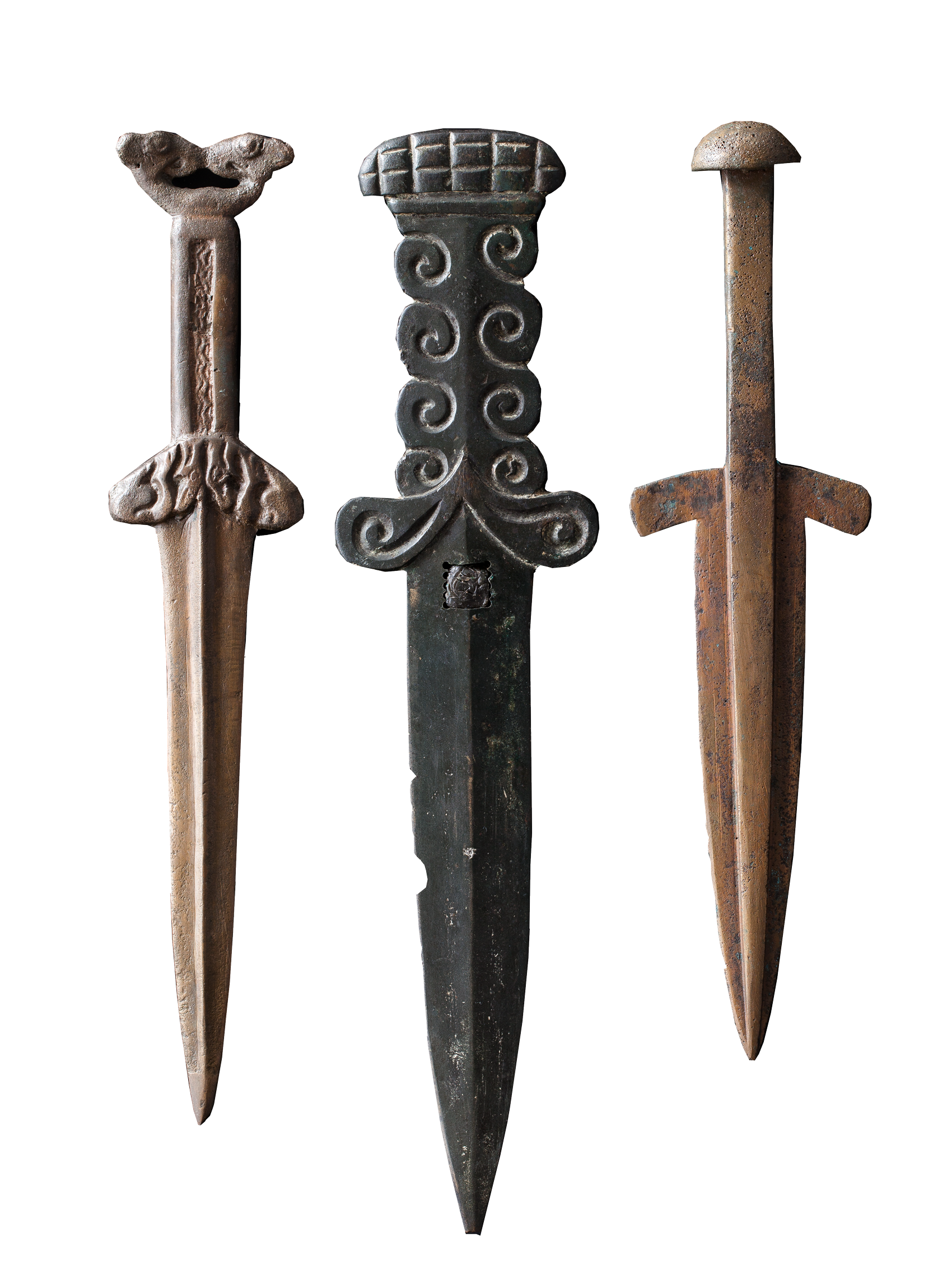
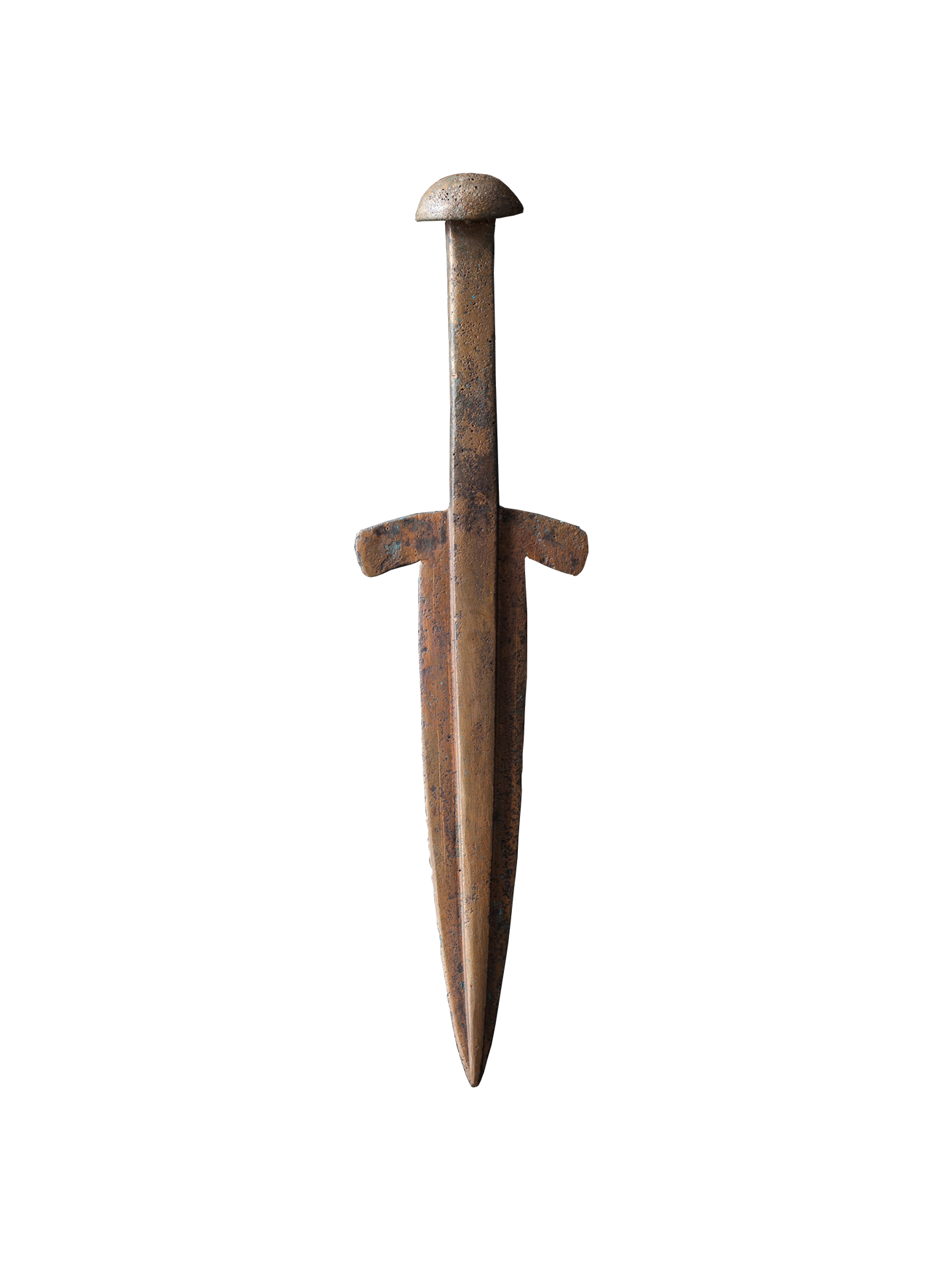
When European Scythians were already widely using swords, daggers and spears made of iron; in Siberia still remained a tradition of making weapons in bronze-casting techniques. The earliest samples of daggers were made as early as the end of the VII – beginning of the VI Centuries BC. Those were made very simple: mushroom or bar-shaped pommels, straight, sometimes slightly curved crossbar. Decorating weapons with additional images was extremely rare. The dagger from the Zmeinogorsky Kurgan (Burial Mound) is quite unique: it has figured handle, decorated with depressions in shape of a rolling wave. The butterfly-shaped crossbar is decorated with spiral curls. On the mushroom-shaped pommel is made a mesh ornament. Later pommels and crossbars were decorated in the Scythian-Siberian style: heads of birds of prey, figures of hogs or predators.
More information...Thus, the pommel of a dagger found near the village of Talmenskoye in the Altai is decorated with symmetrically arranged heads of fantastic animals: long-eared gryphons. The Gryphons have a curved beak, round eyes and distinct ears. The curved crossbar is decorated with paired figures of predators, crouched to the ground, with their snout lowered to their front legs and a snarling mouth (wolves?). In the recess in the middle part of the handle is made a long wavy line: perhaps a common symbol of a snake.
Functional purpose: bronze daggers were used throughout the Scythian era by the population of the steppes, forest-steppes, foothills of Eastern Europe, Southern Siberia and Central Asia. A dagger or short sword is an indispensable attribute of a Scythian warrior.
Notice of uniqueness: bronze daggers are one of the most common types of close combat weapons.






